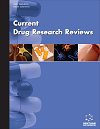
Full text loading...
The Retinoid X Receptor (RXR) is a member of the nuclear receptor superfamily and regulates gene transcription as well as diverse cellular processes like metabolism, inflammation, and cell differentiation. As an attractive therapeutic target, RXR inhibitors have garnered attention for their potential in alleviating chronic diseases. RXR inhibitors have the potential to modulate inflammation and immune responses and manage diseases like rheumatoid arthritis, inflammatory diseases, metabolic disorders such as diabetes and dyslipidemia, cancer progression, solid tumors, and hematologic malignancies. Understanding the molecular mechanisms behind their therapeutic effects is crucial for optimizing their use in different disease contexts. While RXR inhibitors hold promise, some challenges and questions necessitate further research. Future directions include refining the understanding of specific pathways affected by RXR inhibition and addressing potential side effects along with tailoring treatment approaches based on individual patient characteristics, as this would improve outcomes. Exploring the potential synergies of RXR inhibitors with other therapeutic agents could enhance their efficacy and broaden their applicability.

Article metrics loading...

Full text loading...
References


Data & Media loading...

